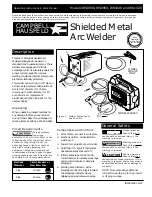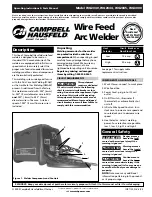Page 3-8
MedPlus TotalAlert® Alarm Network Operation and Maintenance Manual (205728)
Master Alarm Wiring Conventions
Chapter 3: Theory of Operation
Master Alarm Wiring Conventions
The following section provides an overview of typical wiring conventions for
Master Alarm inputs and outputs (see figure 3-2 on page 3–9):
• To have the most reliable switch signalling, BeaconMedæs recommends
using input switches and relays having contacts that match the following
Master Alarm electrical characteristics:
•
Low voltage (approximately 20V AC)
•
Low current (approximately 10 mA)
•
Dry circuit applications
Refer to the wiring instructions from the manufacturer for specific switches and
relays.
• To comply with the NFPA 99 standard, every switch and relay must have sep-
arate wiring to each Master Alarm.
• Polarity is determined by the indicators on the Master Alarm Breakout P.C.
Boards. Switches and contacts on signalling devices are not usually marked
with polarity indicators.
• When Master Alarms share input signals from the same pair of contacts on
switches or relays, polarity between each Master Alarm must be maintained.
• Low pressure sensing switches are typically wired from the normally open
and common contacts to each Master Alarm.
•
Maintain polarity by wiring the normally open contact wire to the posi-
tive (+) terminal and the common contact wire to the negative (-) termi-
nal.
Normally open and normally closed refer to the state of the switch or relay in its
“shelf position” (the position of the switch or relay before the system is opera-
tional).
• High pressure sensing switches are typically wired from the normally closed
and common contacts to each Master Alarm.
•
Maintain polarity by wiring the normally closed contact wire to the pos-
itive (+) terminal and the common contact wire to the negative (-) termi-
nal.
• Switches sensing both high pressure and low pressure have independently
operating sets of contacts, one set for low pressure and one for high pressure.
Summary of Contents for MedPlus TotalAlert
Page 370: ...Schematic Wiring Diagram Typical Local Alarm...
Page 371: ...Schematic Wiring Diagram Typical Master Alarm...
Page 372: ...Schematic Wiring Diagram Typical Master Alarm to Master Alarm...
Page 373: ...Schematic Wiring Diagram Typical Area Alarm...
Page 374: ...Schematic Wiring Diagram Typical Master Alarm to Three Area Alarm...
Page 375: ...Schematic Wiring Diagram Typical Master Alarm to Six Area Alarm Combination...


















